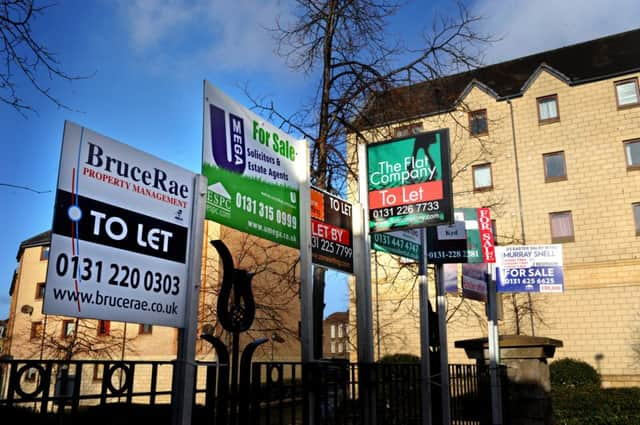The pros and cons of change in tax


APRIL 2015 sees the advent of Scotland’s much-trailed new regime to tax property transactions – Land and Buildings Transaction Tax (LBTT). For every supporter who heralds the new regime as more equitable, there are detractors in seemingly equal measure who cite the potentially harmful impact of the tax on property markets.
In less than a month, the current Stamp Duty Land Tax (SDLT) will largely cease to apply to transactions involving property located in Scotland. Gone is the tax at the highest possible rate approach of SDLT, replaced with a progressive banded structure. The new tax is vaunted by the Scottish Government as fairer for most transactions. We have been examining the reforms in close detail over the last few months and what seems clear is that there will be winners and losers under LBTT.
Advertisement
Hide AdAdvertisement
Hide AdLooking at working examples across Scotland’s residential property markets, what we can say is that with most residential property transactions where the price payable is below the £320,000 level, the tax payable under LBTT is likely to be less than under SDLT. To put current prices in context, the median house price in Scotland is currently around £170,000 according to Registers of Scotland’s data for Q4 2014.
However, there are a large number of family-sized houses, mainly in Scotland’s largest cities, which routinely sell for prices well in excess of the median and therefore would attract LBTT over and above SDLT. A family-sized house in, for instance, Barnton in Edinburgh or Milngavie near Glasgow, is likely to sell for around £375,000. This would mean LBTT of £10,850, whereas the SDLT would be £8,750. While the overarching aim of the new tax is to remove perceived distortions in the property pipeline created by the SDLT “slab” thresholds, LBTT may create some not insignificant distortion in localized property markets.
The groups which look set to benefit most are young single people, couples without children and downsizers who will have a reduced tax burden under the new system. Families who are further up the property ladder and looking to move into larger properties look likely to be harder hit by higher property tax bills. An unintended consequence is that those families could decide not to move after all and this could create something of a log-jam in the system which might not be easily freed up.
The biggest effect under LBTT is for commercial property owners and tenants. The different tax rates for commercial transactions (up to 4.5 per cent on the top slice of prices over £350,000) ensure that the largest proportion of the tax-take from LBTT is placed on developers and investors. A baseline take of 25 per cent of the unrelieved total tax bill on an acquisition of a portfolio of residential properties in Scotland may see some investors looking further afield for opportunities where the tax levels may be lower. The differences in the application of the two systems to developers whose business models work on buying properties and “flipping” them on to third parties for a profit are very wide indeed. Under SDLT, the acquisition is wholly free of SDLT for the original pur-chaser even if only part of the property is being sub-sold. The position under LBTT is that there is relief available to the original purchaser at the point of the acquisition, but there is a possibility that the relief may be clawed back in the event of the subsequent purchaser failing to develop out the site within five years. This introduces an element of risk into such transactions for the original purchaser which must be factored into land pricing.
It also places an evidential burden on the original purchaser who must prove that the relief should not be clawed back at the end of the five year period. The subsequent purchaser will likely not want to be constrained to develop out within the five years since the planning process for many large and complex developments can take many years. This could lead to a potentially difficult situation, whereby the original purchaser must carry the risk of a large tax bill five years down the line and the subsequent purchaser is under time pressure to comply with a very short build-out period.
On the surface, LBTT looks very much like more of the same, with the winners being buyers of residential properties at or around the median Scottish house price due to the slab and slice nature of the new tax. However, when you delve deeper into the actual workings of the tax, some may l feel the effect when the detail of LBTT bites.
• Dawn Anderson is a senior associate in Anderson Strathern’s commercial real estate team www.andersonstrathern.co.uk